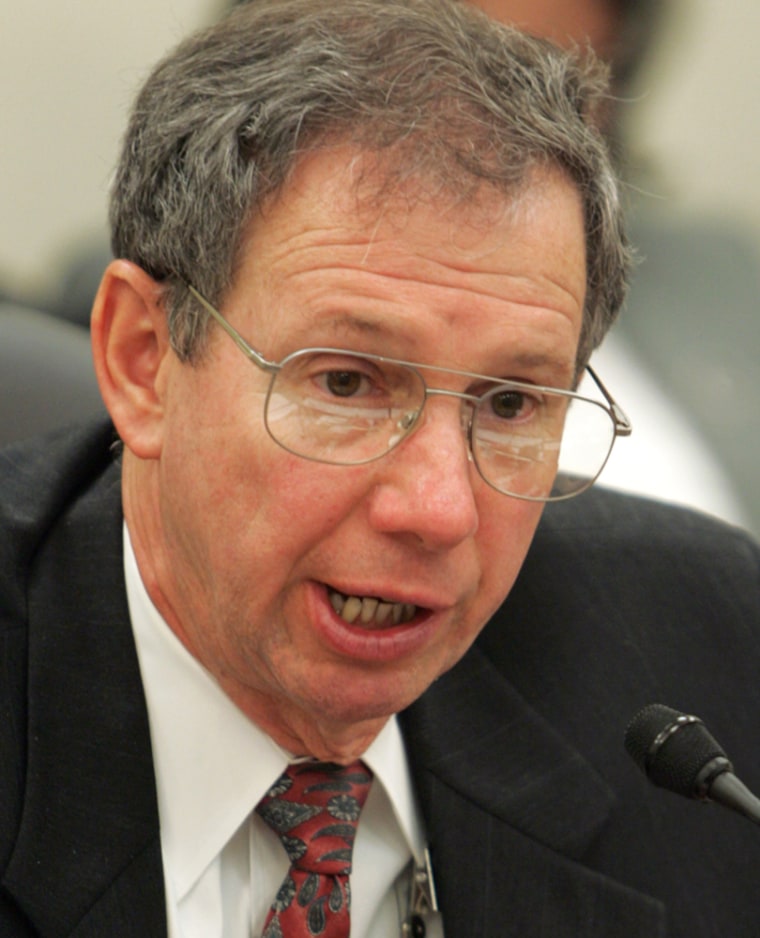The redirection of NASA’s human spaceflight program to focus on exploration beyond Earth orbit brings about great synergies with science, aeronautics, commerce and national security.
However, one ingredient of that synergy — the space science community — is feeling the budgetary pinch as NASA fortifies its portfolio of human space exploration projects.
“I personally have been frustrated for a very long time by the way we in the larger space community have treated two of our major disciplines … science and spaceflight. We act as if they were two circles … that don’t intersect,” observed NASA Administrator Mike Griffin. Human spaceflight and space science at NASA, Griffin said, should be thought of as intersecting circles.
Griffin spoke here at the 22nd National Space Symposium, bringing to a close this week’s annual meeting staged by The Space Foundation in Colorado Springs. The NASA official was en route to Russia to greet a soon-to-land crew from the international space station.
Suitcase science
Griffin said that he realizes many in the space science community consider a renewal of manned exploration beyond Earth orbit to be threat … and primarily a budgetary threat to science. “I view it as a huge opportunity for science,” he said.
In this regard, Griffin envisioned the need to develop new-generation rovers for human explorers on the moon and later on Mars. “But such rovers could be adapted by the science community for missions to places well beyond anywhere we could send people anytime soon, or maybe even never,” he said.
Robotic rovers that can think their way out of tight spots are needed, Griffin said, as is what he termed “no-assembly-required suitcase science.”
Creative ideas for using ultra-tiny equipment to undertake powerful suitcase-science research tasks are to be sought by NASA through a request for study expected at year’s end, Griffin said.
Outer-planets booster
Griffin said that budgetary constraints forced NASA to call a halt to planning for a mission to Europa, an ice-covered moon of Jupiter that may harbor a subsurface ocean of water. “But sometimes when you close one door, another opens,” he added, making note of the much lower radiation environment of Saturn’s moon, Enceladus. That moon was recently found to have possible liquid-water reservoirs erupting in Yellowstone-like geyser fashion.
Enceladus may be an easier target to explore, Griffin said. “We’ll see.”
Missions to Jupiter’s Europa, Saturn’s Titan and Enceladus can be planned in 2016 and beyond, given NASA’s new 100-metric-ton cargo launch vehicle — or perhaps the crew launch vehicle, capable of boosting 25 metric tons, will suffice, Griffin noted.
“So let’s think creatively about what we can do with these launch vehicles,” which would never be built to support science missions alone, he said.
There is also synergy between science, aeronautics and exploration, Griffin said. But NASA missed a great opportunity in not using the high-speed atmospheric entries of the Genesis and Stardust capsules to acquire data. Similarly, space shuttles could have carried experiments to gather invaluable aerodynamic information during re-entry over the past 25 years of service, he said.
National security
Griffin projected into the future, seeing humanity's economic sphere expanding outward into the solar system. In-space fuel delivery, lunar resource prospecting, maintenance of lunar surface systems and habitats — these and other jobs are ripe for commercialization, he said.
As example, Griffin said that fuel on orbit — valued at $10,000 per pound with current launch technology — could be offered via a commercially operated fuel depot in low Earth orbit. That facility could service a multibillion-dollar market, “one that would grow as long as we fly,” he said.
One of the least-considered benefits of NASA’s civil space exploration program is its contribution to national security, Griffin said. Human and robotic exploration by the United States sets the country above and apart from all others in terms of leadership.
“Humans will go to the moon and Mars,” Griffin said. The only questions, he added, are which humans? What values they will hold? What languages they will speak?
Budgetary decisions
Recent budgetary decisions at NASA have upset the space science community.
“I expect the science community to be mad,” Griffin told Space.com. “In previous and in prior times they expected and were told to expect 5, 6, 7 percent growth,” he said.
Now NASA's total budget is growing at 2.4 percent annually, Griffin pointed out. “The best the science community can ever hope for is a pro-rata share of the NASA growth. But for the next few years we cannot even offer that, because the human spaceflight community is also in difficulty.”
Griffin said he’s faced with recovering from the loss of the shuttle Columbia; trying to retire the shuttle; finish up space agency obligations on the international space station; and trying to provide a new system for manned spaceflight beyond low Earth orbit.
“Those things are also important to do, and so we have to have some sort of balance … in and among all the things that are important to do,” Griffin advised. “The science community is still getting an increase … they are not getting the kind of increase that they were promised, and I regret that. But I can do no better.”
